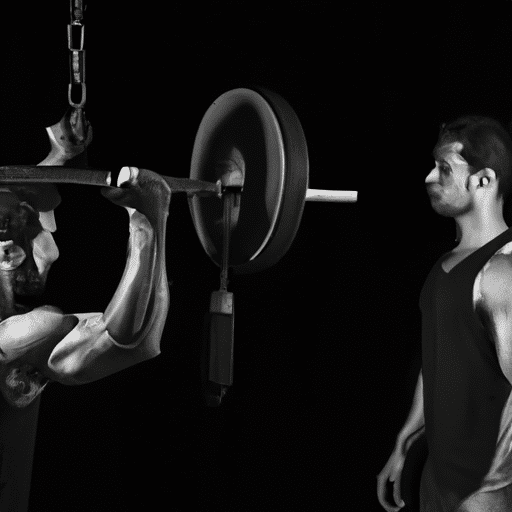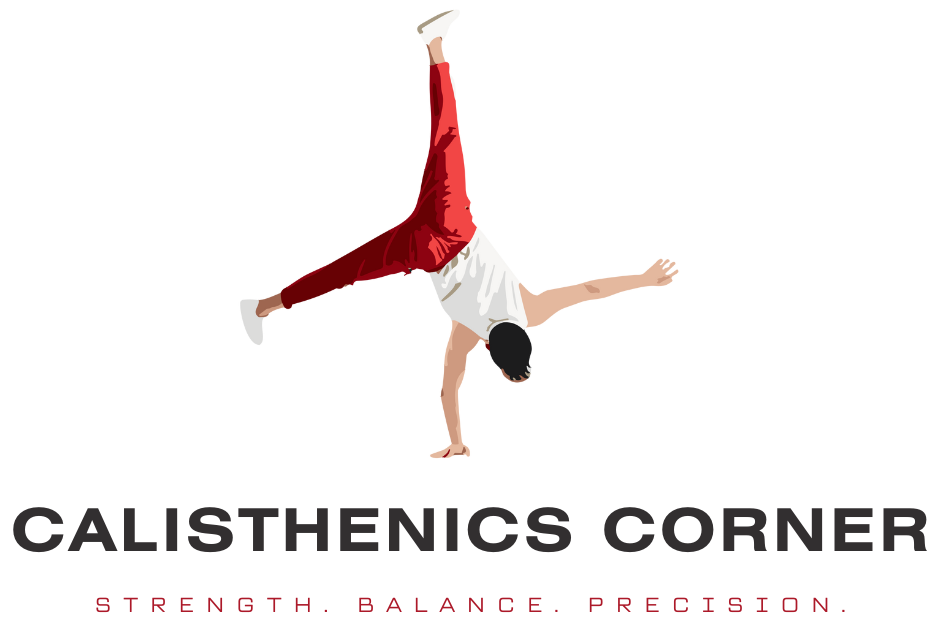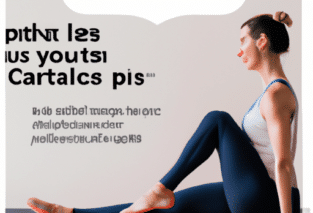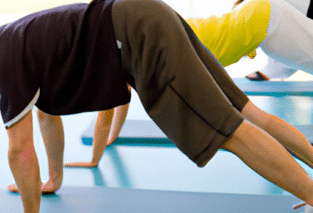In the perpetual debate of strength, there are two superior contenders vying for the title: the bodybuilder and the calisthenics athlete. Both embody discipline, endurance, and relentless dedication towards attaining the pinnacle of physical prowess. Despite their distinct training methods, the common goal of maximizing strength unites them. This article explores the essential attributes and varying approaches of these remarkable athletes, shedding light on the age-old question: Who is stronger?
Muscle Size and Definition
Bodybuilder’s Emphasis on Muscle Size
When it comes to muscle size and definition, bodybuilders are known for their emphasis on muscle size. They strive to achieve massive amounts of muscle mass through intense weightlifting and training. Bodybuilders often have a goal of building the biggest muscles possible, aiming for a look of sheer size and bulk.
Calisthenics Athlete’s Emphasis on Muscle Definition
On the other hand, calisthenics athletes place a greater emphasis on muscle definition. While they do build muscle mass through bodyweight exercises, their primary focus is on having a lean and sculpted physique. Calisthenics athletes aim to have visible muscle separation and a toned appearance, showcasing the definition and lines of their muscles.
Bodybuilder’s Extreme Muscle Mass
Bodybuilders are known for their extreme muscle mass. Through their training regimens, which often involve heavy weights and low repetitions, they are able to develop substantial amounts of muscle hypertrophy. The combination of heavy weightlifting and specific exercises targeting isolated muscle groups contributes to the bodybuilder’s ability to gain large amounts of muscle mass.
Calisthenics Athlete’s Lean and Sculpted Physique
In contrast, calisthenics athletes prioritize a lean and sculpted physique. They achieve this through a combination of bodyweight exercises that target multiple muscle groups simultaneously. By mastering movements such as push-ups, pull-ups, and dips, calisthenics athletes develop a balanced and chiseled physique, showcasing their muscle definition without the extreme muscle mass seen in bodybuilders.
Strength and Power
Bodybuilder’s Focus on Maximal Strength
With a focus on maximal strength, bodybuilders often perform heavy weightlifting exercises to build their strength. By lifting heavy weights, bodybuilders aim to increase their one-rep max in various compound exercises. This emphasis on strength allows bodybuilders to display their raw power and ability to lift heavy loads.
Calisthenics Athlete’s Focus on Relative Strength
Conversely, calisthenics athletes prioritize relative strength over maximal strength. They aim to develop strength that is proportionate to their body weight, focusing on bodyweight exercises that require control, stability, and balance. By mastering movements such as handstands, muscle-ups, and planches, calisthenics athletes showcase their ability to control their own body weight with ease.
Bodybuilder’s Heavy Weightlifting
Bodybuilders are well-known for their heavy weightlifting routines. They often perform exercises such as squats, deadlifts, and bench presses with heavy loads to build overall strength and muscle mass. Heavy weightlifting is integral to their training, as it allows bodybuilders to stress their muscles, causing them to adapt and grow bigger.
Calisthenics Athlete’s Mastery of Bodyweight Exercises
Calisthenics athletes, on the other hand, focus on mastering bodyweight exercises. They perform exercises such as push-ups, pull-ups, and dips, which require significant body control, coordination, and balance. By perfecting these movements, calisthenics athletes develop functional strength that can be applied to real-life scenarios.
Training Methods
Bodybuilder’s Isolation Exercises
Bodybuilders commonly employ isolation exercises, which target specific muscle groups. By using exercises like bicep curls, tricep push-downs, and leg extensions, bodybuilders are able to directly target individual muscles for maximum muscle growth. Isolation exercises allow bodybuilders to achieve the desired muscle size and symmetry necessary for their competitions.
Calisthenics Athlete’s Compound Movements
Calisthenics athletes focus on compound movements that engage multiple muscle groups simultaneously. Exercises such as push-ups, pull-ups, and squats require the coordinated effort of several muscles, leading to overall functional strength and muscle development. By utilizing compound movements, calisthenics athletes engage their entire body, promoting balanced muscle development.
Bodybuilder’s Heavy Weights and Low Reps
To promote maximum muscle hypertrophy, bodybuilders often train with heavy weights and low repetitions. This type of training stimulates the muscle fibers to grow larger and stronger. By challenging their muscles with heavy loads, bodybuilders create the necessary conditions for muscle growth and development.
Calisthenics Athlete’s High Repetitions and Progressive Overload
In contrast, calisthenics athletes typically perform high repetitions of bodyweight exercises. This repetitive training approach focuses on endurance and muscular stamina, allowing calisthenics athletes to perform movements for a prolonged period of time. Additionally, calisthenics athletes utilize progressive overload by continuously increasing the difficulty of exercises to challenge their muscles and promote growth.
Flexibility and Mobility
Bodybuilder’s Limited Focus on Flexibility
Flexibility is not a primary focus for bodybuilders. While they may perform stretching exercises to some extent, their main emphasis is on building muscle size and strength. As a result, bodybuilders may have limited flexibility as their muscles become larger and tighter.
Calisthenics Athlete’s Emphasis on Full Range of Motion
Calisthenics athletes, on the other hand, place great importance on maintaining flexibility and achieving a full range of motion. To perform bodyweight exercises effectively, calisthenics athletes must have the flexibility and mobility to execute movements with precision and control. By prioritizing flexibility, calisthenics athletes can enhance their performance and reduce the risk of injuries.
Bodybuilder’s Potential Restricted Mobility
Due to the extreme muscle mass they develop, bodybuilders may experience restricted mobility. The increased size of their muscles can limit their range of motion, making certain movements more challenging. This restricted mobility can affect their overall functional fitness and limit their ability to perform certain exercises or daily activities.
Calisthenics Athlete’s Improved Body Control
Calisthenics athletes, on the other hand, often have improved body control and mobility due to their emphasis on maintaining a full range of motion. By regularly practicing bodyweight movements that require flexibility and control, calisthenics athletes develop a high level of body awareness and coordination. This improved body control translates to enhanced performance in their exercises and daily life activities.
Muscle Endurance
Bodybuilder’s Short Duration Intense Workouts
Bodybuilders typically focus on short, intense workouts that target specific muscle groups. Their training methodology revolves around lifting heavy weights for a relatively low number of repetitions. This approach primarily develops explosive strength, allowing bodybuilders to lift heavy loads for a brief duration.
Calisthenics Athlete’s Prolonged Muscle Endurance
Calisthenics athletes, on the other hand, prioritize prolonged muscle endurance. Their training style involves performing high repetitions of bodyweight exercises, often in circuit or interval training formats. By pushing their muscles to perform repetitive movements for extended periods, calisthenics athletes develop exceptional muscular endurance.
Bodybuilder’s Focus on Explosive Strength
Bodybuilders place great emphasis on explosive strength, which allows them to lift heavy weights in a single, powerful effort. This type of strength is essential for performing maximal lifts and demonstrating their power on stage. By training explosively, bodybuilders develop the ability to generate high levels of force in a short amount of time.
Calisthenics Athlete’s Ability to Perform Repetitive Movements
In contrast, calisthenics athletes focus on the ability to perform repetitive movements with control and precision. By consistently training with high repetitions, calisthenics athletes condition their muscles to work efficiently for an extended duration. This ability to sustain repetitive movements is crucial for calisthenics athletes in competitions or during intense training sessions.
Training Variability
Bodybuilder’s Repetitive Training Routines
Bodybuilders often follow repetitive training routines, focusing on specific muscle groups on designated days. This structured approach allows them to target individual muscles for maximum growth and development. By following this repetitious routine, bodybuilders can meticulously track their progress and ensure consistent training.
Calisthenics Athlete’s Diverse Exercise Selection
Calisthenics athletes, on the other hand, have a diverse exercise selection that engages various muscle groups simultaneously. They incorporate a wide range of bodyweight exercises, including push-ups, dips, pull-ups, and handstands, to create a well-rounded training routine. This variety of exercises challenges different muscles and ensures balanced muscle development.
Bodybuilder’s Isolation Exercises and Muscle Imbalances
While bodybuilders achieve impressive muscle size through isolation exercises, there is a risk of developing muscle imbalances. By focusing on specific muscle groups, bodybuilders may neglect other areas of their bodies, leading to muscular imbalances and potential injury. It is essential for bodybuilders to incorporate exercises that target all muscle groups to maintain overall muscle balance.
Calisthenics Athletes’ Balanced Muscle Development
Due to the nature of calisthenics training, athletes develop a well-balanced physique. The combination of compound exercises and full-body movements creates a harmonious development of muscles throughout the body. Calisthenics athletes strive for a balanced muscle development that allows them to perform complex movements and showcases overall athleticism.
Injury Potential
Bodybuilder’s Risk of Joint and Tendon Injuries
Unfortunately, the intense weightlifting and repetitive nature of bodybuilding can put athletes at risk of joint and tendon injuries. The heavy weights and high loads placed on the body during training can strain joints and tendons, increasing the risk of chronic overuse injuries. Proper form, adequate rest, and proper rehabilitation techniques are necessary to minimize the risk of these injuries for bodybuilders.
Calisthenics Athlete’s Lower Risk of Overuse Injuries
Calisthenics athletes have a lower risk of overuse injuries compared to bodybuilders. The focus on bodyweight exercises and controlled movements reduces the strain on joints and tendons. By mastering their own body weight and gradually progressing in difficulty, calisthenics athletes can develop strength and endurance without placing excessive stress on their joints and tendons.
Bodybuilder’s Heavy Weightlifting Strains
Heavy weightlifting is a hallmark of bodybuilding, but it also places a significant strain on the body. The sheer amount of weight lifted can put stress on various structures, such as the spine, joints, and ligaments. Bodybuilders must be vigilant about maintaining proper form and ensuring their bodies can handle the heavy loads they are lifting.
Calisthenics Athlete’s Controlled Movements and Progressive Overload
Calisthenics athletes focus on controlled movements and progressive overload, which helps minimize the risk of injuries. By gradually increasing the difficulty and intensity of bodyweight exercises, athletes can safely challenge their muscles without risking excessive strain or injury. The emphasis on body control and technique helps calisthenics athletes maintain proper form, reducing the risk of accidents or injuries.
Functional Fitness
Bodybuilder’s Focus on Aesthetics
For bodybuilders, aesthetics are a primary focus of their training. They aim to sculpt their bodies to showcase a visually appealing physique on stage. However, the emphasis on aesthetics may not always translate to functional fitness or real-life application of their strength and abilities.
Calisthenics Athlete’s Functional Movement Training
Calisthenics athletes prioritize functional movement training, which focuses on movements that mimic real-life activities. By incorporating exercises that improve strength, stability, coordination, and mobility, calisthenics athletes develop functional fitness that can enhance their performance in daily life and various sports or physical activities.
Bodybuilder’s Potential Limited Real-Life Application
While bodybuilders possess impressive strength and muscle mass, their training may not directly translate to real-life situations or functional fitness. The isolation exercises and focus on muscle size and aesthetics are not always applicable to real-world activities or sports that require a broader range of movement patterns and functional skills.
Calisthenics Athlete’s Improved Body Coordination
Calisthenics athletes benefit from improved body coordination due to their emphasis on full-body movements and control. By practicing complex movements such as handstands, planches, and muscle-ups, calisthenics athletes enhance their ability to coordinate their body’s movements effectively. This improved body coordination has practical applications in various sports and physical activities.

Nutrition and Diet
Bodybuilder’s High Protein and Caloric Intake
Bodybuilders have high protein and caloric intake requirements due to their intense training and muscle-building goals. They consume significant amounts of protein to support muscle growth and a surplus of calories to fuel their workouts and recovery. Bodybuilders often focus on consuming lean sources of protein, such as chicken, fish, and whey protein supplements.
Calisthenics Athlete’s Nutrient-Dense Diet
Calisthenics athletes also prioritize proper nutrition, but their approach may differ from bodybuilders. They typically aim for a nutrient-dense diet that provides a wide range of vitamins, minerals, and antioxidants to support overall health and performance. Calisthenics athletes often incorporate whole foods like fruits, vegetables, lean proteins, and whole grains into their diet.
Bodybuilder’s Focus on Bulking and Cutting
Bodybuilders often follow a cycle of bulking and cutting to maximize muscle growth and achieve a lean, defined physique. During the bulking phase, they consume a surplus of calories to support muscle growth, while the cutting phase involves reducing caloric intake to shed excess fat, revealing their muscle definition. This cycle helps bodybuilders achieve the desired muscle size and definition for competitions.
Calisthenics Athlete’s Sustainable Nutrition Approach
Calisthenics athletes generally adopt a more sustainable nutrition approach that promotes long-term health and performance. They focus on maintaining a balance of macronutrients and consuming nutrient-dense foods that support optimal energy levels and recovery. Calisthenics athletes prioritize overall health and well-being over extreme bulking and cutting cycles.
Competition and Performance
Bodybuilder’s Judged on Symmetry and Muscularity
Bodybuilders are primarily judged on their symmetry and muscularity in physique competitions. Judges assess the size, proportion, and balance of muscle groups, as well as overall aesthetics and muscular definition. Bodybuilders strive for the perfect balance of muscle mass and definition to create a visually pleasing physique on stage.
Calisthenics Athlete’s Performance-Based Competitions
Calisthenics competitions, on the other hand, prioritize performance-based criteria. Athletes are evaluated based on their ability to execute various complex movements, such as planches, handstands, and dynamic combinations. Judges assess the execution, control, fluidity, and creativity of the athletes’ routines, emphasizing skill and athleticism rather than solely focusing on aesthetics.
Bodybuilder’s Focus on Stage Appearance
For bodybuilders, stage appearance is a significant aspect of their competitions. They aim to present a visually striking physique that highlights their muscle mass, symmetry, and definition. Bodybuilders go through meticulous preparation, including tanning, posing practice, and oil application, to enhance their stage appearance and showcase their hard-earned physique.
Calisthenics Athlete’s Emphasis on Skill and Execution
In calisthenics competitions, the focus is on the athlete’s skill and execution of movements, rather than solely on appearance. Athletes aim to perform their routine with precision, demonstrating control, strength, flexibility, and creativity. In addition to physical prowess, judges assess the difficulty and technical aspects of the movements performed, rewarding athletes who showcase mastery in their routines.
Throughout each section, we have explored the unique emphasis and approaches of bodybuilders and calisthenics athletes in various aspects of training, physical abilities, and competition preparation. Understanding the distinctions between these two disciplines can help you determine the training style that aligns with your fitness goals and individual preferences. Whether your focus is on building massive muscle size or developing functional strength and overall athleticism, both bodybuilding and calisthenics offer unique benefits that can enhance your fitness journey.








